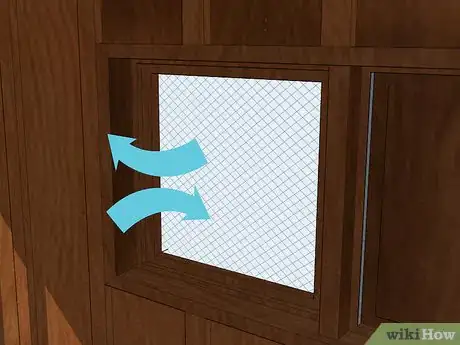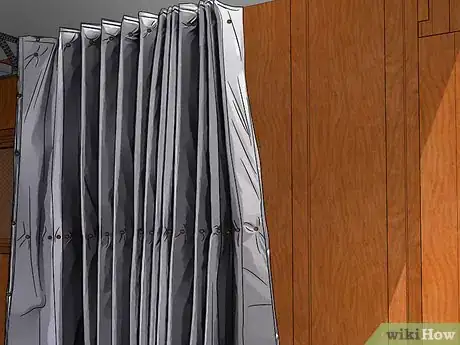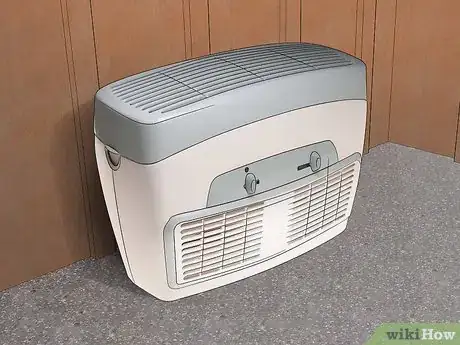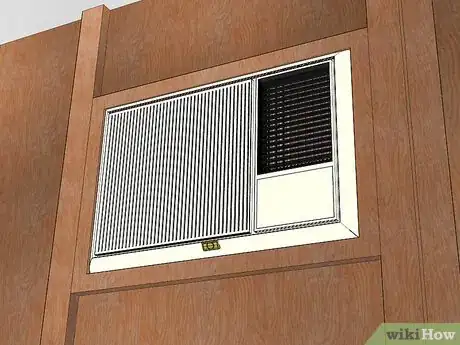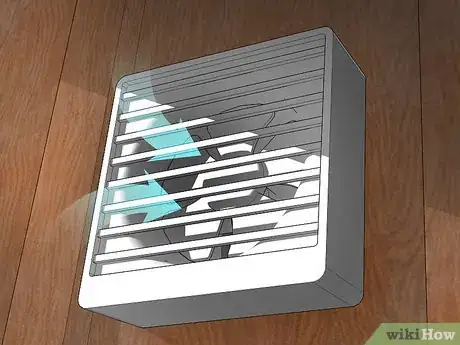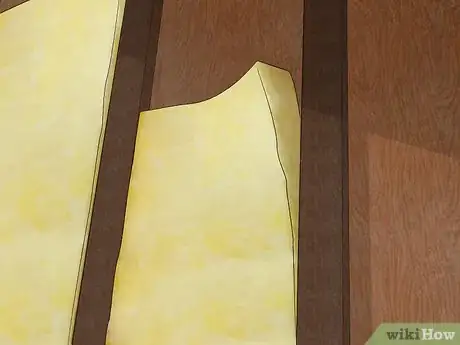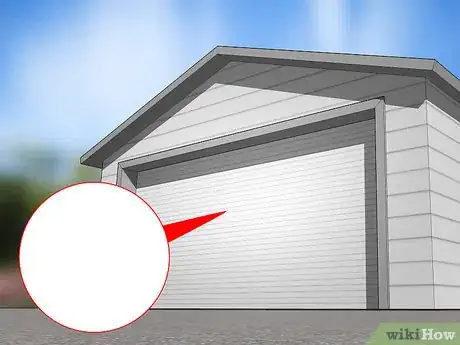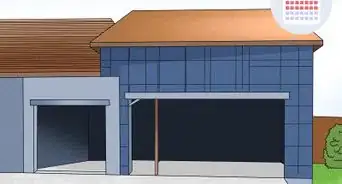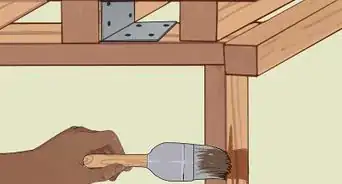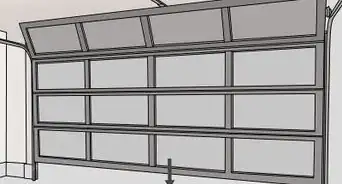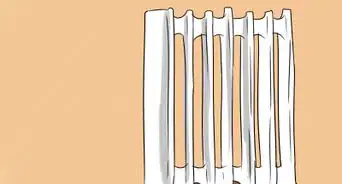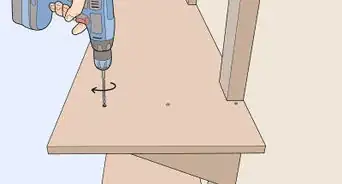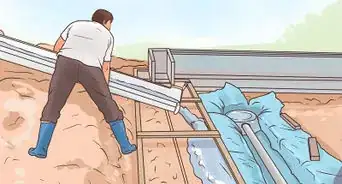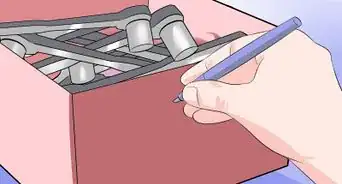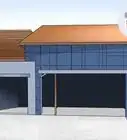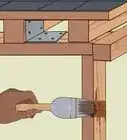This article was co-authored by Jacob Pischer and by wikiHow staff writer, Sophia Latorre. Jacob Pischer is a Home Improvement Specialist and the Owner of Helpful Badger, a home repair service in Portland, OR. With over four years of experience, Jacob specializes in a variety of handyman services including pressure washing, cleaning gutters, repairing drywall, fixing leaky plumbing fixtures, and repairing broken doors. Jacob studied at Madison Area Technical College and has a background in real estate investment.
There are 7 references cited in this article, which can be found at the bottom of the page.
This article has been viewed 44,513 times.
Having a garage can be a wonderful asset. You can use it as a space to chill out, to put vehicles, or just for extra storage. Unfortunately, garages are often prone to heating up excessively in warm weather. Luckily, there are plenty of temporary and permanent solutions to help keep your garage cool!
Steps
Utilizing Temporary Solutions
-
1Open the garage door to let in cooler air. This is the simplest way to decrease the temperature. Just open the door to increase the airflow and allow the hot air to be exchanged for cooler air.[1]
- For security reasons, close the garage door at night.
-
2Leave the windows open to create a breeze. If you have windows, this is one of the easiest and most effective options you have at your disposal for keeping your garage cool. When a garage is exposed to the sun all day without any new air being brought into it, the temperature inevitably gets very high.[2]
- If you live in a safe area, and one that doesn’t get too windy, feel free to leave your windows open overnight. This allows the cold air from the night to come in and cool down the garage.
Advertisement -
3Allow hot vehicles to cool down before parking them in the garage. If your vehicle has been sitting in the sun all day and you drive it into your garage, it acts as a massive radiator. Leaving your car outside until it has cooled off can prevent the temperature in the garage from increasing.[3]
- If you’re in a hurry to get your car into your garage, try pouring some cold water on the roof of the car to cool it off.
-
4Get insulated curtains to keep the heat out. Look online or in a homeware store for curtains designed to prevent hot air from coming inside. Install them over the windows so that on really hot days you can pull them shut to keep the sun from heating up the garage too much.[4]
- These types of curtains are available in various sizes, textures, colors, and patterns so you can choose a type that matches your personal style.
-
5Install a dehumidifier to lower the humidity level. When a room has a high humidity level, it makes the temperature feel significantly higher than it really is. Look for a dehumidifier that can run on a preset program so you don’t have to constantly adjust it.[5]
- Humidifiers work by drawing moisture out of the air and sending back clean dry air. They normally store the moisture that they collect in a tray at the bottom of the unit.
- Once the unit is full of water, the dehumidifier stops working, so make sure that you empty the water out of it every day. You can just dispose of this water down the sink or toilet.
Finding Permanent Solutions
-
1Install an air conditioning unit for best results. You can find these online and in home goods stores. There are a variety of A/C units at a range of different price levels. Look for one that suits your budget, and that has the functions you want (speed, temperature, auto-programming, etc.).[6]
- In some cases, you'll need a window in which to install the A/C unit in.
- If you want something more industrial, look at buying a wall-mounted heat pump. These usually have a variety of functions and features that help keep the room cool. They do, however, usually require professional installation.
-
2Use ventilation fans to circulate stale air. If your garage and roof are properly insulated, the problem is likely that you don't have enough ventilation in your garage.[7] Install 1-2 sidewall ventilation fans in your garage to cool it down. Position these fans on the wall directly across from the garage door and place them near the ceiling so they are as efficient as possible.[8]
- For best results, keep your garage door open 4 inches (10 cm) or so to increase the air circulation within the space.
- If you don't want to install sidewall ventilation fans, select a swiveling, freestanding fan with large blades that has multiple settings.
- Another option is installing a ceiling fan. These are a little more expensive than freestanding fans, but as they help circulate the entire room, the price is often worth it.
-
3Upgrade your insulation to prevent the garage from heating up. Talk to a contractor about replacing the insulation in your garage.[9] Typically, they'll drill holes in the wall and fill in the empty space with foam insulation[10]
- Insulation makes it easier to keep the building warm in the winter and cool in the summer. It works by not allowing the temperature outside to have too much of an effect on the temperature inside.
- This process of retroactively upgrading your insulation works by a builder pumping the insulation into the wall.
-
4Invest in an air exchange system to decrease the temperature by up to 20 °F (−7 °C). Air exchange systems replace stale air in the garage with cool air from outside. They are fairly heavy-duty and are usually mounted to the ceiling and vented outdoors.[11]
- Unless you have electrical knowledge and experience, plan to have this type of system installed by a professional.
-
5Paint your garage door a light color if it is dark. Since dark colors absorb heat, garages with dark-colored doors tend to head up faster. For a quick fix, paint your garage door white or another very light color.[12]
- Replacing the roof over your garage with light-colored roofing materials can also make a difference, though this is a costly solution.
Expert Q&A
Did you know you can get expert answers for this article?
Unlock expert answers by supporting wikiHow
-
QuestionWhy is my garage so hot?
 Jacob PischerJacob Pischer is a Home Improvement Specialist and the Owner of Helpful Badger, a home repair service in Portland, OR. With over four years of experience, Jacob specializes in a variety of handyman services including pressure washing, cleaning gutters, repairing drywall, fixing leaky plumbing fixtures, and repairing broken doors. Jacob studied at Madison Area Technical College and has a background in real estate investment.
Jacob PischerJacob Pischer is a Home Improvement Specialist and the Owner of Helpful Badger, a home repair service in Portland, OR. With over four years of experience, Jacob specializes in a variety of handyman services including pressure washing, cleaning gutters, repairing drywall, fixing leaky plumbing fixtures, and repairing broken doors. Jacob studied at Madison Area Technical College and has a background in real estate investment.
Home Improvement Specialist
References
- ↑ https://garagespot.com/cooling-home-garage/
- ↑ https://garagespot.com/cooling-home-garage/
- ↑ https://www.askthebuilder.com/hot-garage-ventilation/
- ↑ https://www.energy.gov/energysaver/energy-efficient-window-attachments
- ↑ https://www.directenergy.com/blog/9-tips-keeping-cool-air-conditioner-breaks/
- ↑ https://garagespot.com/cooling-home-garage/
- ↑ Jacob Pischer. Home Improvement Specialist. Expert Interview. 4 September 2020.
- ↑ https://www.askthebuilder.com/hot-garage-ventilation/
- ↑ Jacob Pischer. Home Improvement Specialist. Expert Interview. 4 September 2020.

